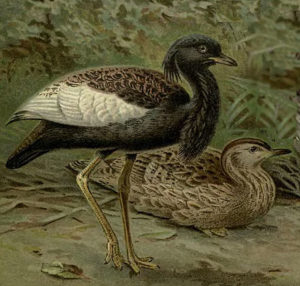ForumIAS announcing GS Foundation Program for UPSC CSE 2025-26 from 19 April. Click Here for more information.
ForumIAS Answer Writing Focus Group (AWFG) for Mains 2024 commencing from 24th June 2024. The Entrance Test for the program will be held on 28th April 2024 at 9 AM. To know more about the program visit: https://forumias.com/blog/awfg2024
What is the News?
Bustard Specialist Group (BSG) of the International Union for Conservation of Nature has written to the Assam government on the urgent need to prevent land-use changes at Kokilabari Seed Farm in the state to protect Bengal floricans and other species.
About Kokilabari Seed Farm
Kokilabari Seed Farm is located in Assam. The farm is only nine square kilometres in area and about one-hundredth of the size of Manas. Yet as many as 25 Bengal floricans have been seen there at one time.
However, Land-use changes at the site and the plan to convert the farm into a university campus is posing a threat to the Bengal Florican.
About Bengal Floricans

Bengal floricans (Houbaropsis bengalensis) are also called Bengal bustards. They inhabit lowland dry, or seasonally inundated, natural and semi-natural grasslands often interspersed with scattered scrub or patchy open forest.
Found in: The species is found in very small numbers in India and Cambodia. About a hundred of them are present in Nepal, and the species is extinct in Bangladesh.
India: In India, the species habitat lies in the floodplains of the country’s two largest rivers, the Ganga and the Brahmaputra.
In the Ganga floodplains, Bengal floricans are found in the state of Uttar Pradesh at places like the Dudhwa and Pilibhit Tiger Reserve.
In the Brahmaputra delta, the species is found in Jaldapara National Park in West Bengal, Kaziranga and Manas National Parks in Assam and the D’Ering Wildlife Sanctuary in Arunachal Pradesh.
IUCN Status: Critically Endangered
Indian Wildlife Protection Act,1972: Schedule-I
Convention on Migratory Species(CMS): Appendix 1
Threats: The populations are in decline and threatened by habitat loss through drainage, conversion to agricultural land and plantations, the invasion of alien species, and dam construction.
Source: This post is based on the article “Development projects threaten Bengal florican habitat in Assam” published in Down To Earth on 18th October 2021.




